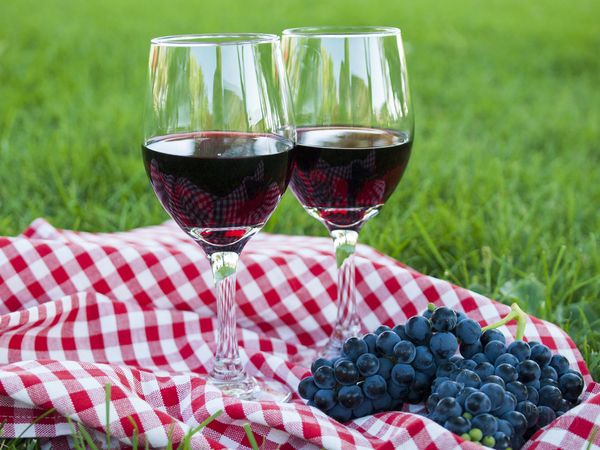Variety Isabella refers to the table-technical varieties of grapes, it can turn out quite a decent drink, if you take into account some of the advice of experienced winemakers. Despite the criticism from the professionals regarding the quality of the berries, many gardeners grow crops in their plots in order to replenish their home stocks with excellent wine.
Table of contents
The advantages of Isabella for making wine
Isabella's homemade grape drink turns out very fragrant saturated colors. The taste is set off by a strawberry note.
Due to different technological processes of making wine, you can change the color from dark burgundy to white. This is achieved by using as a raw material base of pure juice different isabel hybrids (without skin and seeds).
The incredible popularity of Isabella is explained by the following primary characteristics of the plant:
- high yield (60-75 c / ha);
- strong immunity opposed to typical grape diseases;
- the frost resistance which is not demanding creation of special shelter for the winter period;
- quick recovery of frozen vines;
- good survival rate of seedlings, intensive release of new shoots;
- indicators sugar content and acidity are in the required ratio;
- large amounts of juice in the fruit;
- bright taste notes can be complemented by flavors of other products without losing the varietal expressiveness;
- simple rules of agricultural engineering.
Gardeners note the unpretentiousness of the plant, it develops well literally on any soil with low and high humidity.
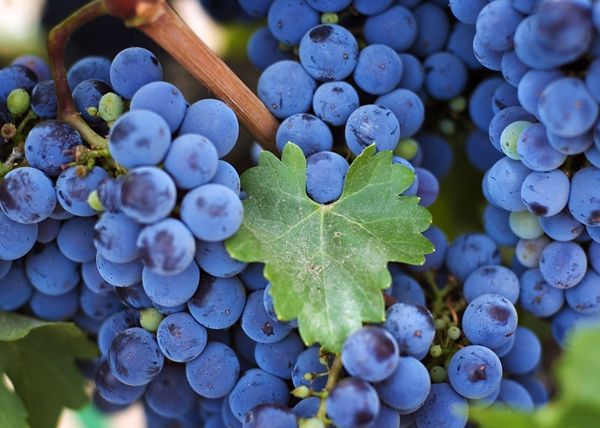
However, in addition to the simplicity of cultivation, experts distinguish medicinal properties Isabella Derivatives of grapes are used as an aid in the treatment of colds and upper respiratory tract. This effect is achieved thanks to the expectorant properties of the berries.
Wine is used to prepare mulled wine, which warms well in frosty or wet weather.
Every year, tons of wine from Isabella replenish private collections and wine cellars of industrial complexes, which confirms the popularity of grapes.
This is allegedly due to the presence in the berries of methanol - a hazardous substance to health. In fact, the statement is incorrect, since this component is part of any alcoholic drink. In winemaking from Isabella, its concentration is below the permissible level.Therefore, many experts associate the forbidden move purely with marketing policy.
When and how to pick grapes
The technical ripeness of the fruits of the Isabella variety falls on last decade of October of the month. In order for the berry to accumulate a sufficient amount of sugar content, you need to wait another week, only then you can collect and the grapes are ready for processing into wine.
It is important to have time to harvest before the onset of frost. When choosing the day of the slice of clusters, weather conditions are also taken into account, there should be no precipitation.
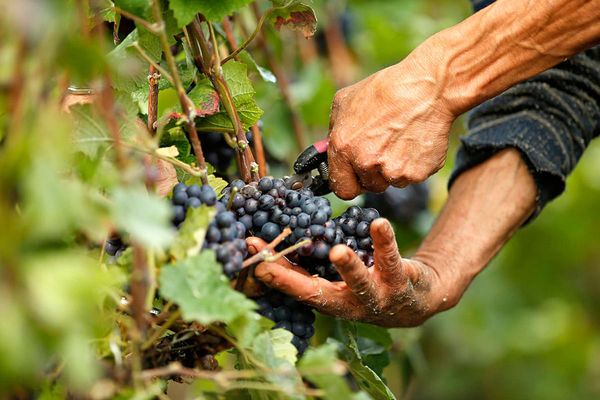
The ripeness is determined by the pleasant taste with sour and multifaceted aroma. The skin of the berries is dense, even slightly stiff. Ripe healthy hands are selected for wine, all damaged, unripe or diseased fruits are removed. When cutting the grapes, it is important not to damage the integrity of the berries, so that they do not lose their juiciness.
Sorted grapes are laid out in a clean, dry container for further processing. It is not necessary to wash it at home; there are bacteria on the surface of the berries that perform the function of natural yeast.
How to make a homemade dry or semi-sweet wine with your own hands
Ingredients
To prepare a lot of wine ingredients do not need, it is worth cooking only grapes and sugar. Also for the work you will need containers: bottles (wine), a spacious barrel (preferably from oak blanks), a sieve.
During fermentation, gases are emitted, for their release will require special water seal and thin hose. Often, these devices in the home are replaced by rubber gloves.
Proper preparation for processing
For the preparation of wine are selected only healthy grapes with high-quality berries. Quality means not parameters and beauty, but integrity and no signs of damage or disease.
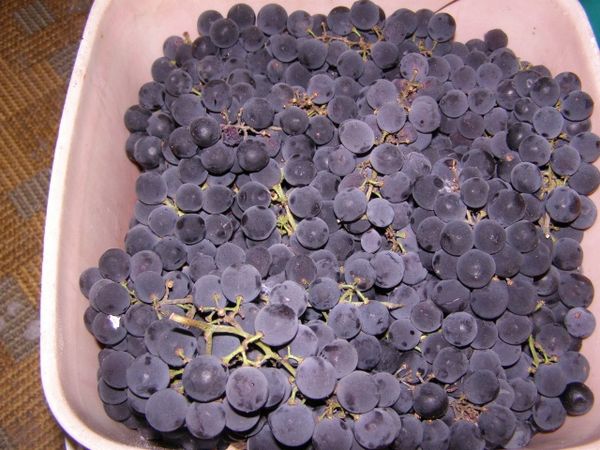
For further processing of grapes no need to wash, it is enough to wipe each with a dry cloth, removing street dust. You should not be afraid of harmful bacteria and microorganisms, they will be absolutely safe in the process of fermentation. According to microbiological laws, the same bacteria are natural substitutes for yeast, so their presence improves fermentation.
Getting juice
Juice is not extracted without the application of physical force, as required spinning berriesIn the good old days, the big barrel was filled with grapes, which were subsequently crushed with previously washed feet. At large plants used press machine.
Modern winemakers at home resort to different methods:
- crushing the berries with their hands, followed by filtering through a sieve;
- the pass of grapes through a grape crusher;
- the use of tolkushki, which chokes potatoes for mashed potatoes, etc.
The methods of obtaining juice can be used completely different, but it is important to note that when pressure is applied to the berry, the stone should not be damaged. Also, the peel is not allowed. They change the taste of wine materials, complementing its tartness and bitterness.
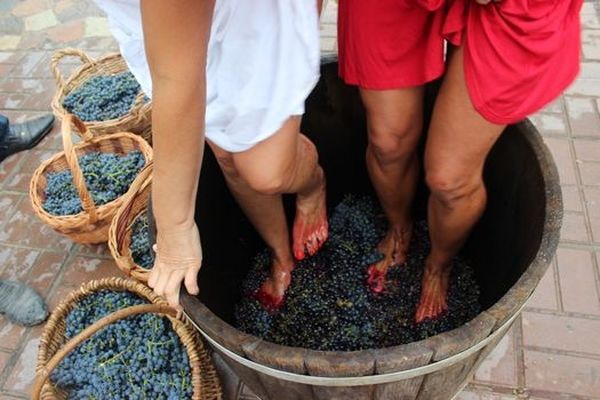
Wort fermentation technology
To make the wine provides for the fermentation stage. To ensure normal conditions you need to choose a wort. spacious glassware (a bottle on 10, 15, 20 and more liters).
Pre-tanks are washed out and dried well. You should not fill the top of the container with juice; you need to leave at least 2/3 of the place free. So the right fermentation conditions will be observed.
Added sugar recipe mix well until dissolved. After that, the neck of the bottle is closed with a special stopper (rubber glove).
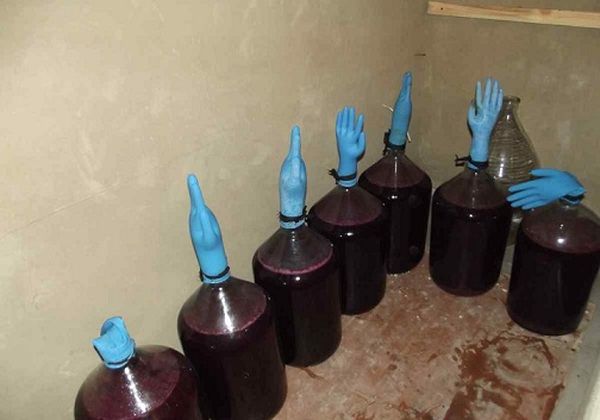
Wander juice will be good in a warm placetherefore, it is necessary to find a suitable corner in advance. But it is not recommended to put the container under the sun or into too hot a room, the probability of souring the wort is high.
As soon as fermentation begins, a hole is made in the stopper and a tightly thin hose is inserted into it, the docking is fixed with clay or wax. Its other end is dipped in a jar filled with water. Thus, the release of gases.
The consumption rate of sugar per liter of juice is from 100 to 300 grams. It all depends on the recipe and type of wine produced (dessert, table).
The container with the wort should be in a darkened room with a temperature regime 16-22 degrees. At high temperatures, the bottle may break off from intensely generated gases. The maximum permissible rate does not exceed 28-30 degrees.
Sugar is added in portions, for the first time it is mixed with juice before fermentation. It uses only half of the prescription volume. After 4-5 days after the start of fermentation, another 25% of the sweet component is added to the container. After thorough mixing, the neck is sealed with a water seal, and after 5 days, the remaining portion of sugar is added to the bottle.
Signs of the end of the stage are:
- gas cessation from a hose (or deflated rubber glove);
- precipitation at the bottom of the dish;
- clarification of wine and the appearance of transparency.
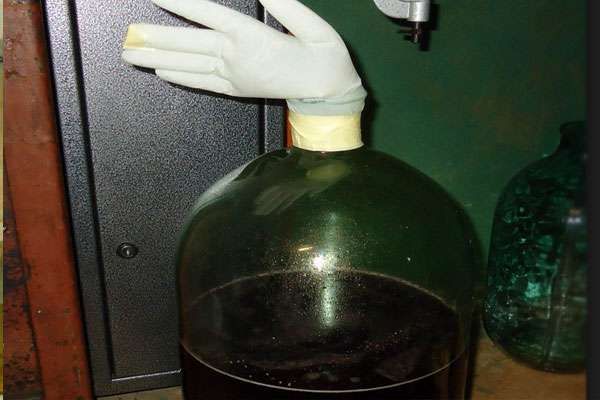
If fermentation does not end after 55 days of settling, the wine needs to be drained through a straw into a clean container and again blocked with a gas seal with the release of gases. When transfusing, it is important not to touch the precipitate, otherwise it will give the drink bitterness.
Ripening and adjusting taste
The adjustment of taste is made easier if the household has a special device for determining the level of acid in the grape juice (pH meter).After receiving the wort, measurements are taken, then compared with the norm indicators. They must be within 4-6 g per 1 liter of juice.
The result may vary annually, since several factors affect the acidity, in particular weather conditions. Experienced winemakers have learned to determine the level of acid to taste: if it reduces the cheekbones, and the tongue pinches, then the indicator is elevated.
After the fermentation stage of the wine is completed corrected for sweetness. Sugar is added taking into account the wishes and preferences of the winemaker, but it is not recommended to use alcohol or vodka as an additional ingredient.
Fortified wines have a longer shelf life, but they taste harder. In any case, this additive should not exceed 2-15% of the total blanks.
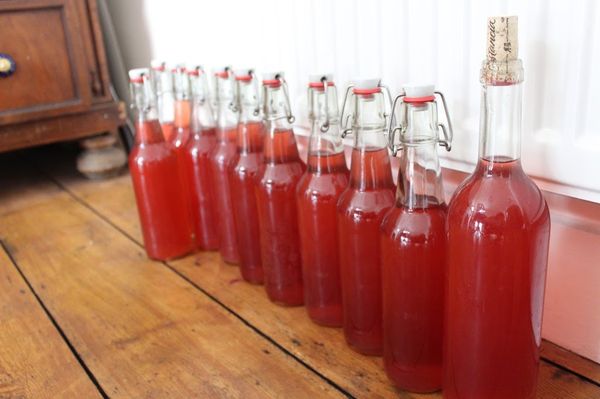
Balanced to taste semi-sweet or dry bottled in clean bottles that are sealed. Fill the container should be up to the top, so that the wine as little as possible in contact with oxygen.
Homemade wine is stored in the cellars or the refrigerator at a temperature regime 6-16 degrees. The aging time of the drink is 3 months. During this period, every 10-15 days, the contents of the bottles are poured into clean dishes through a straw to get rid of sediment. After 3-6 months, you can make the first test.
To stand the finished product of winemaking in compliance with the technological process can about 5 years. The strength of homemade wine is 9-12%.
Cooking with water
Among the recipes of wine from grapes Isabella popular technology using water. Fluid added in this case regulates juice acidbut reduces the strength of the drink. The main advantage of this method is to obtain a large amount of product.
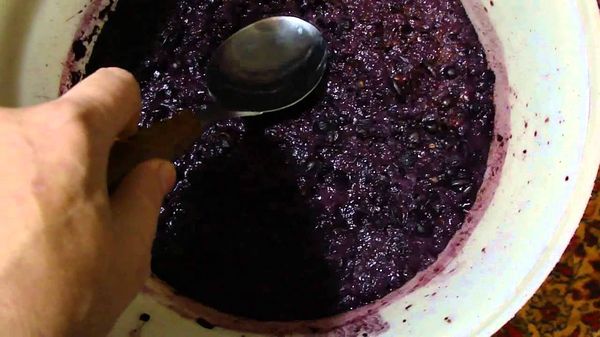
Stages of the process of making wine with the addition of water step by step:
- Fold the pulp in clean bulk dishes, add sugar (40 g. Per 1 liter of juice) and water (30-40%).
- Put the tank in a warm darkened room for 4-5 days. Stir the mixture periodically and churn the foam.
- With the intensive formation of a frothy cap, filter the juice with a sieve or cheesecloth.
- Dilute juice 30-40% of the total mass boiled water.
- Pour the product into bottles, closing the neck with cotton.
- If the fermentation process takes place calmly, then a hydraulic lock or rubber glove is fixed on the neck.
- The fermented mixture is drained from the sediment, driving the wine material to clean dishes.
- Warm up the drink a little and add sugar (200 gr. on 1 l).
- The wine is kept at a temperature of 6-16 degrees for 1-2 months. Periodically it is necessary to drain the drink from the sediment until transparency is achieved.
Wine making technology recommended for balancing acidity. This method is used in regions with an unfavorable climate, where, due to lack of sun and overmoistening of the soil / air, the berry contains a low sugar index, but is characterized by high acidity.
In the normal ratio of sugar and acid, add water Not recommended, it spoils the taste of the drink.
Grapes Isabella looks very nice as a gazebo, giving it an aesthetic appearance and forming a shadow. The plant is easy to care, does not take much time for trimming and garter. And in the fall, and before winter comes, by harvesting, you can be creative and prepare a delicious homemade wine by adding your own secret ingredient to the recipe, which will give the drink an exquisite taste.
